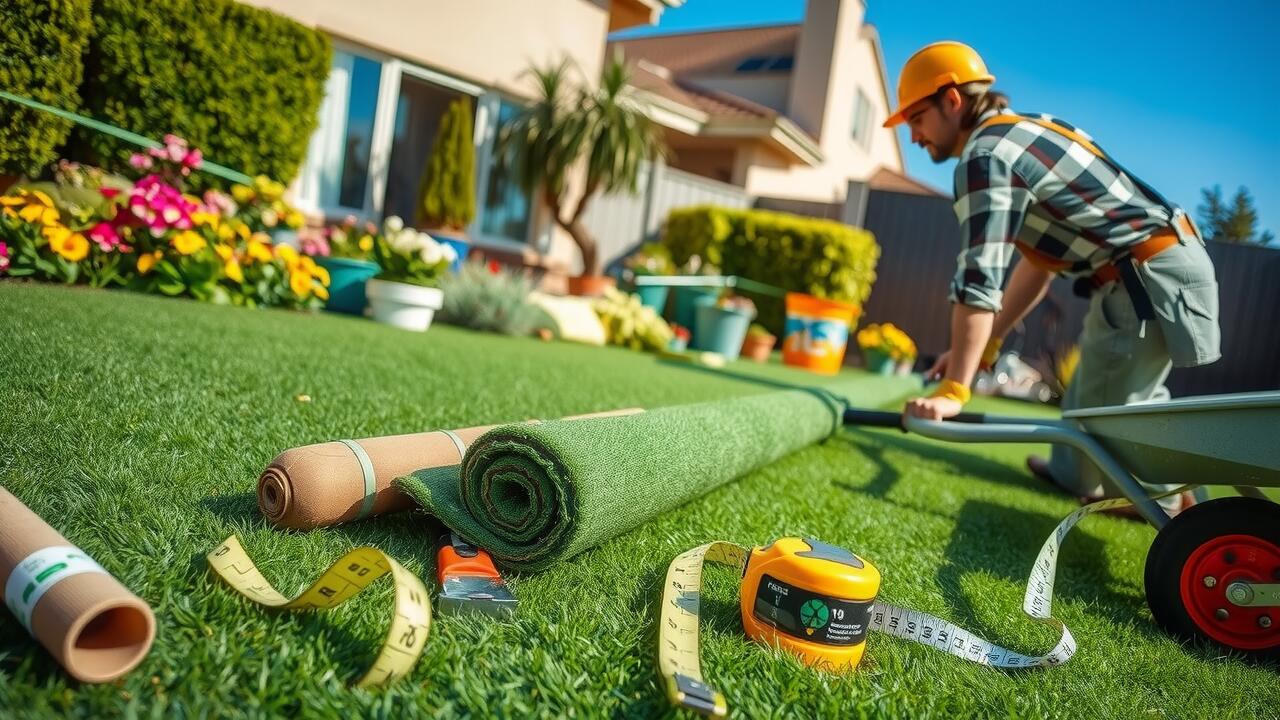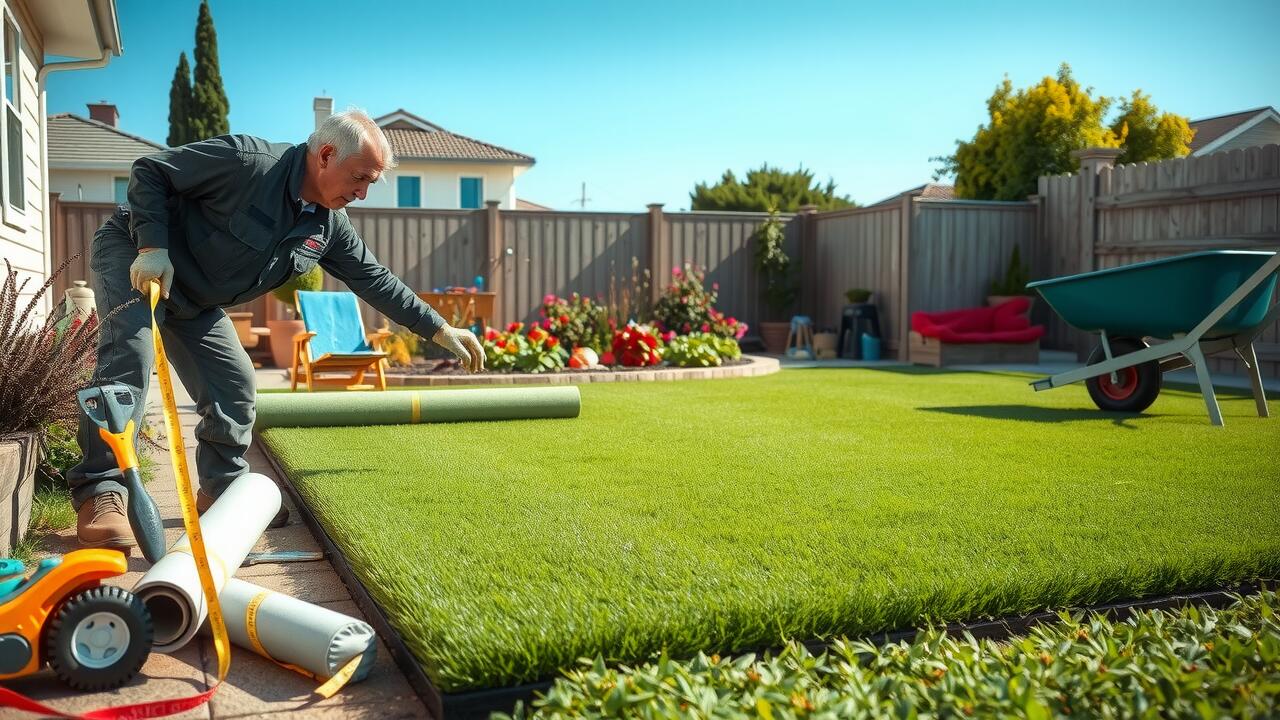
DIY vs. Hiring a Professional
When deciding between a DIY approach and hiring a professional for turf installation, it’s essential to consider both the skills required and the potential savings. Many homeowners opt for the DIY route to save on labor costs. With careful planning and the right tools, installing artificial grass can be a manageable task. Resources such as online tutorials and guides provide valuable information that can help novices succeed. However, improper installation can lead to issues down the line, such as uneven surfaces or drainage problems.
On the other hand, hiring a professional for turf installation often guarantees a higher quality outcome. Experts bring experience, specialized equipment, and knowledge about local regulations that can make the installation process smoother. While this option typically costs more upfront, it may save money in the long run by reducing maintenance needs and extending the lifespan of the turf. Homeowners must weigh these factors when deciding which route to take, as the best choice depends on individual budget and confidence in their DIY skills.
Weighing the Costs of Each Approach
When contemplating the cheapest method for turf installation, weighing the pros and cons of DIY versus hiring a professional is essential. DIY projects can save money upfront, as you avoid labor costs associated with hiring experts. However, the initial savings may be offset by potential mistakes, which can lead to additional expenses for correction or replacement. It is crucial to consider your skill level and the time you can realistically dedicate to the project.
On the other hand, hiring a professional for turf installation presents a different set of costs and benefits. While this approach requires a higher initial investment, it often comes with the advantage of guaranteed workmanship and expertise. Professionals can efficiently navigate challenges that arise during installation, minimizing waste and ensuring a proper fit. This can ultimately lead to a longer-lasting and more visually appealing result, offering good value for the money spent.
Maintaining Your Artificial Grass
Regular maintenance of artificial grass is essential for preserving its appearance and prolonging its lifespan. Simple tasks such as brushing the fibers help to remove debris and keep the grass looking fresh. Occasional rinsing with water can eliminate dust and odors, especially in warmer climates. Keeping the area free of sticks and leaves will prevent buildup that could diminish the attractiveness of your turf installation.
Low-cost maintenance options can effectively enhance the durability of your artificial grass. Using a mixture of water and mild soap can help address stains and spills without damaging the fibers. Additionally, periodic inspections allow for early detection of any wear or damage. Addressing small issues before they escalate can save time and money down the line, ensuring the turf installation remains in excellent condition.
Low-Cost Maintenance Tips
Regular maintenance of artificial grass is essential to ensure its longevity and appearance. A simple approach involves brushing the grass with a stiff broom to keep the fibers upright and remove debris. Proper brushing also prevents matting and keeps the turf looking fresh, enhancing the overall aesthetic. Routine rinsing with a hose can help wash away dirt and pet waste, maintaining a clean surface.
Occasional checks for weeds and pests are necessary and can often be done without resorting to costly treatments. Applying a diluted vinegar solution can deter weeds without harming the turf. For those with pets, using a mixture of water and mild detergent can help eliminate odors. Awareness of manufacturer recommendations after turf installation will also guide maintenance practices and ensure your artificial grass remains vibrant for years.
Local Regulations and Permits
Before embarking on a turf installation project, it is crucial to understand the local regulations and permits that may apply. Different municipalities have varying requirements, and some might mandate permits for landscaping projects, including artificial grass. Checking with your local zoning office can provide insight into whether you need to apply for permits. Familiarizing yourself with these regulations can help you avoid potential fines and ensure your project complies with community standards.
In addition to permits, there may be specific guidelines regarding the materials used and the installation process. Some areas have rules governing the type and quality of artificial grass allowed. It is also advisable to verify if any homeowners’ associations have additional stipulations concerning turf installation. Taking the time to research these factors can save you time and money in the long run, ensuring a smooth and compliant installation.
Understanding Potential Costs
When considering the costs associated with laying artificial grass, it is crucial to account for all potential expenses involved in the turf installation process. These can include the price of materials, tools, and any necessary underlayment. Additionally, if you decide to hire a professional, labor costs will significantly affect your budget. Obtaining multiple quotes from installers can provide a clearer picture of the market rates and help you choose a route that aligns with your financial plan.
Local regulations and permitting fees can also play a role in the overall cost. Some areas may require permits for turf installation, which could add to your expenses. Being aware of these requirements beforehand can prevent unexpected costs and delays. Moreover, it is wise to check if there are local initiatives or rebates that could offset your expenses, making the financial commitment of artificial grass more manageable.
FAQS
What is the cheapest way to lay artificial grass?
The cheapest way to lay artificial grass is to take a DIY approach, which involves purchasing the materials yourself and installing them without professional help. This can significantly reduce labor costs.
Is it worth hiring a professional to install artificial grass?
Hiring a professional can ensure a high-quality installation and may save you time and effort. However, if you are looking to save money, doing it yourself is the more cost-effective option.
What are some low-cost maintenance tips for artificial grass?
Low-cost maintenance tips include regularly brushing the grass to keep it looking fresh, rinsing it with water to remove dust and debris, and using a leaf blower for quick clean-ups.
Are there any local regulations or permits required for installing artificial grass?
Depending on your location, you may need permits or to follow specific regulations regarding artificial grass installation. It’s best to check with your local government or homeowners’ association for any requirements.
How can I reduce the initial costs of purchasing artificial grass?
To reduce initial costs, consider shopping around for discounts, buying in bulk, looking for sales, or choosing a lower-grade product that still meets your needs.
